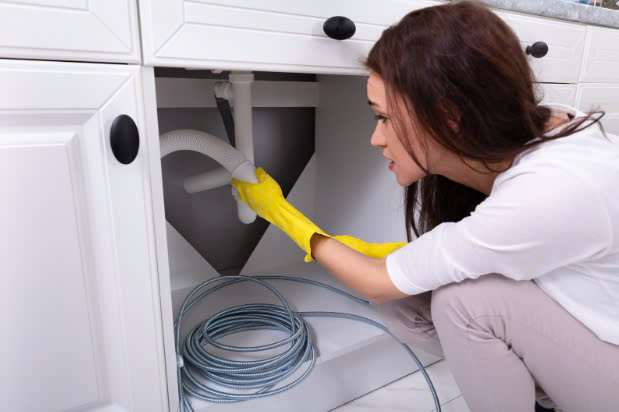Plumbing systems are the unsung heroes of any home, diligently working behind the scenes to ensure that water flows smoothly to where it’s needed most. Without them, everyday tasks like cooking, cleaning, and bathing would be disrupted. Yet, it’s often when these systems falter that their importance becomes glaringly apparent. Unresolved plumbing issues can quickly escalate into costly repairs, unsightly water damage, and potential health hazards. Hence, prioritising proactive maintenance and adopting preventative measures isn’t just wise—it’s essential. This article will explore key guidelines to help homeowners maintain their plumbing systems effectively, thus preventing common issues before they arise.
Contents
Understanding Your Plumbing System Basics
To effectively manage plumbing concerns, it’s crucial to first understand the components of a typical home plumbing system. Standard systems generally consist of pipes for water supply, fixtures like sinks and toilets, drainage pipes, and the main water shut-off valve. These components work together to efficiently deliver water and remove waste. Recognising potential plumbing issues early can save significant time and money. Watch out for signs like slow-draining sinks, unusual noises, or unexpected water stains.
Equally important is knowing the location of your main water shut-off valve. Should a leak occur, knowing this vital piece of information could mean the difference between a minor inconvenience and extensive water damage. Familiarity with these basics sets the foundation for effective plumbing management and prevents potential mishaps.
Routine Maintenance Tips for Homeowners
Routine maintenance is a homeowner’s best friend when it comes to preserving plumbing systems. Scheduling periodic professional plumbing inspections ensures any concealed issues are detected before they become major problems. However, not all maintenance needs to be left to the professionals. There are numerous DIY checks and tasks homeowners can perform, including regularly checking under sinks for signs of leaks and ensuring all drains are clog-free.
Keeping drains and pipes clean is paramount. A simple DIY method involves pouring a mixture of baking soda and vinegar down the drain, followed by flushing with hot water. Additionally, monitoring water pressure is crucial, as pressure that’s too high can cause wear and tear on pipes, leading to leaks. Common causes of water pressure issues include mineral build-up or faulty pressure regulators.
Preventative Measures Against Clogs and Blockages
Clogs and blockages are among the most common plumbing issues. Preventing blocked drains is easier than you think. A good start is identifying and avoiding items that should not go down the drain, such as grease, coffee grounds, and fibrous vegetables. Installing drain strainers and traps also greatly reduces the risk of clogs by catching hair and debris before they enter the pipes.
Regular drain cleaning techniques, like the baking soda method mentioned earlier, are invaluable. Pouring hot water down the drains weekly helps prevent build-up. Understanding sewer line maintenance is equally important; it’s recommended to have them professionally cleaned every 18-24 months. This foresight prevents daunting blockages and keeps your system running smoothly.
Addressing Leak Concerns Promptly
Leaks, if left unchecked, can result in severe financial and structural repercussions. Common causes of leaks include old pipes, corroded joints, or excess water pressure. Signs of leaks range from water puddles and damp spots to an unexpected increase in your water bill. Acting promptly upon noticing any of these signs is essential to mitigating damage.
For minor leaks, a step-by-step detection process involves visually inspecting visible pipes and using a water meter to check for unseen leaks. Temporary solutions for minor leaks might include using pipe sealants or patches. However, if these methods don’t suffice, it’s wise to call a professional. Ignoring leaks can lead to significant structural issues, mould growth, and hefty repair costs.
Preparing Your Plumbing for Seasonal Changes
Weather fluctuations can impact plumbing systems considerably. As temperatures drop, the risk of pipes freezing and potentially bursting increases. Winterising your pipes involves insulating them and leaving taps slightly open to allow for expansion. It’s a simple step that can prevent a costly freeze.
A seasonal inspection checklist should encompass checking for exposed pipes, ensuring adequate insulation, and verifying that the main shut-off valve is functioning correctly. For climates that experience harsh winters, it might also include checking heating systems involving water lines. Being proactive with seasonal changes ensures plumbing systems remain in optimal condition, regardless of the weather outside.
Conclusion
In summary, adopting a proactive stance on plumbing maintenance is undoubtedly beneficial. Implementing essential strategies discussed in this article can significantly reduce the likelihood of common plumbing issues. By understanding and regularly inspecting plumbing systems, taking preventative measures against clogs, addressing leaks promptly, and preparing for seasonal changes, homeowners can maintain a faultlessly functioning system. The long-term benefits include reduced costs, improved home safety, and increased peace of mind. Now is the time to put these guidelines into practice, securing the wellness of your home’s plumbing system for years to come.







